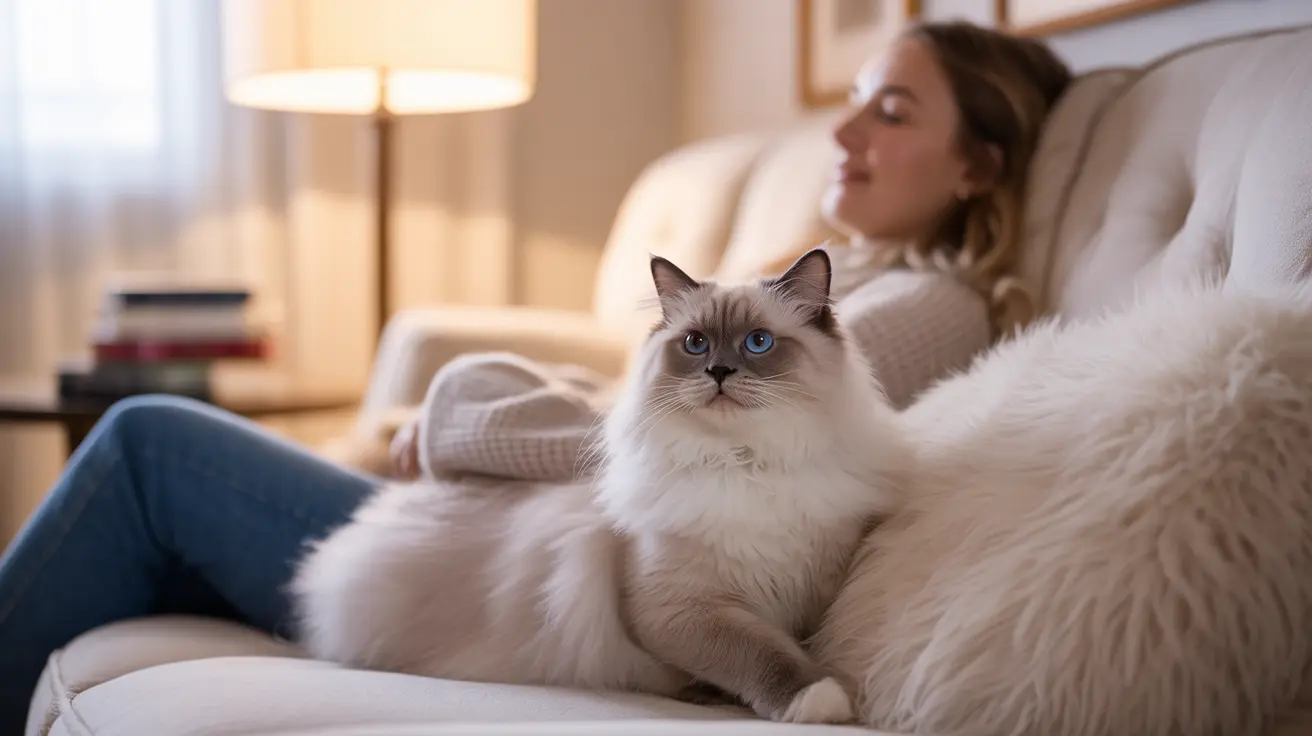The Science of Feline Attachment
Recent research published in the Journal of Current Biology has shown that cats form secure attachments to their human caregivers, similar to dogs and human infants. When your cat sits behind you, it's often a direct expression of this bond. This position allows them to maintain proximity while feeling safe and secure in your presence.
The release of oxytocin, often called the "bonding hormone," occurs in both cats and humans during these close interactions, even without direct physical contact. This biochemical response helps strengthen the emotional connection between you and your feline companion.
Natural Instincts and Strategic Positioning
When your cat chooses to sit behind you, they're actually demonstrating sophisticated survival instincts. This position offers several strategic advantages:
Protection and Security
By positioning themselves behind you, cats can:
- Monitor their environment while remaining protected
- Use you as a shield from potential threats
- Maintain a clear escape route if needed
Trust and Vulnerability
When a cat sits with their back to you, they're displaying a significant level of trust. In the feline world, exposing their vulnerable side to another creature is a clear sign that they feel completely safe in your presence.
Communication and Attention-Seeking
Sometimes, your cat's choice to sit behind you serves as a subtle form of communication. They might be:
- Politely requesting attention or food
- Staying close enough to interact when desired
- Maintaining a comfortable distance while remaining connected
Environmental Factors and Social Dynamics
In multi-pet households, the behavior of sitting behind you can take on additional significance. Cats may choose this position to:
- Assert their place in the household hierarchy
- Find a safe space away from other pets
- Maintain proximity to their preferred human while avoiding direct confrontation with other animals
The Role of Individual Personality
Different cat breeds and personalities may be more prone to this behavior. Breeds like Siamese, Ragdoll, and Abyssinian are known for being particularly people-oriented and may be more likely to stay close to their owners. However, any cat can develop this habit based on their individual preferences and experiences.
When to Be Concerned
While sitting behind you is typically normal behavior, sudden changes in this pattern might warrant attention. Watch for:
- Excessive clinginess
- Signs of anxiety or stress
- Changes in other behavioral patterns
- Additional unusual symptoms
Frequently Asked Questions
Why does my cat like to sit behind me instead of directly beside or on me?
Your cat may choose this position because it offers a perfect balance of proximity and independence. It allows them to feel connected to you while maintaining their personal space and staying alert to their surroundings.
Does my cat sitting behind me mean it trusts and feels safe with me?
Yes, when your cat sits behind you, it's a strong indication of trust and security. By exposing their vulnerable side to you, they're demonstrating complete comfort in your presence.
Can sitting behind me be my cat's way of seeking attention or signaling a need?
Yes, this can be a subtle way for your cat to communicate their desires. They're staying close enough to get your attention when needed while being respectful of your space.
How do a cat's instincts influence its habit of sitting behind its owner?
This behavior is deeply rooted in survival instincts. The position allows them to observe their environment while using you as protection, similar to how cats in the wild might position themselves for optimal safety and surveillance.
What should I do if my cat suddenly starts sitting behind me more often or acts clingy?
If you notice a sudden increase in this behavior or unusual clinginess, monitor your cat for other behavioral changes. Consider recent environmental changes that might be causing anxiety, and consult your veterinarian if you're concerned about significant behavioral shifts.






